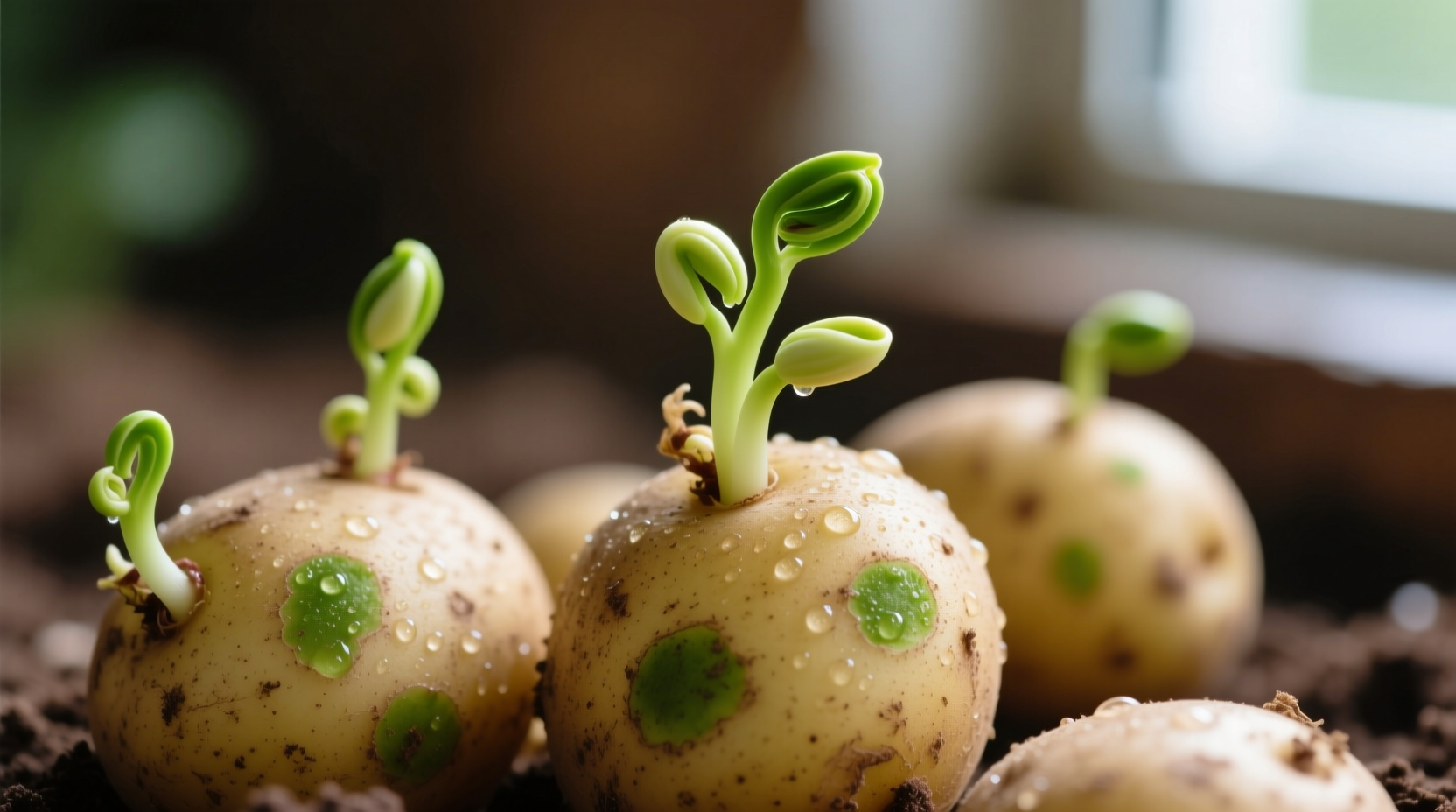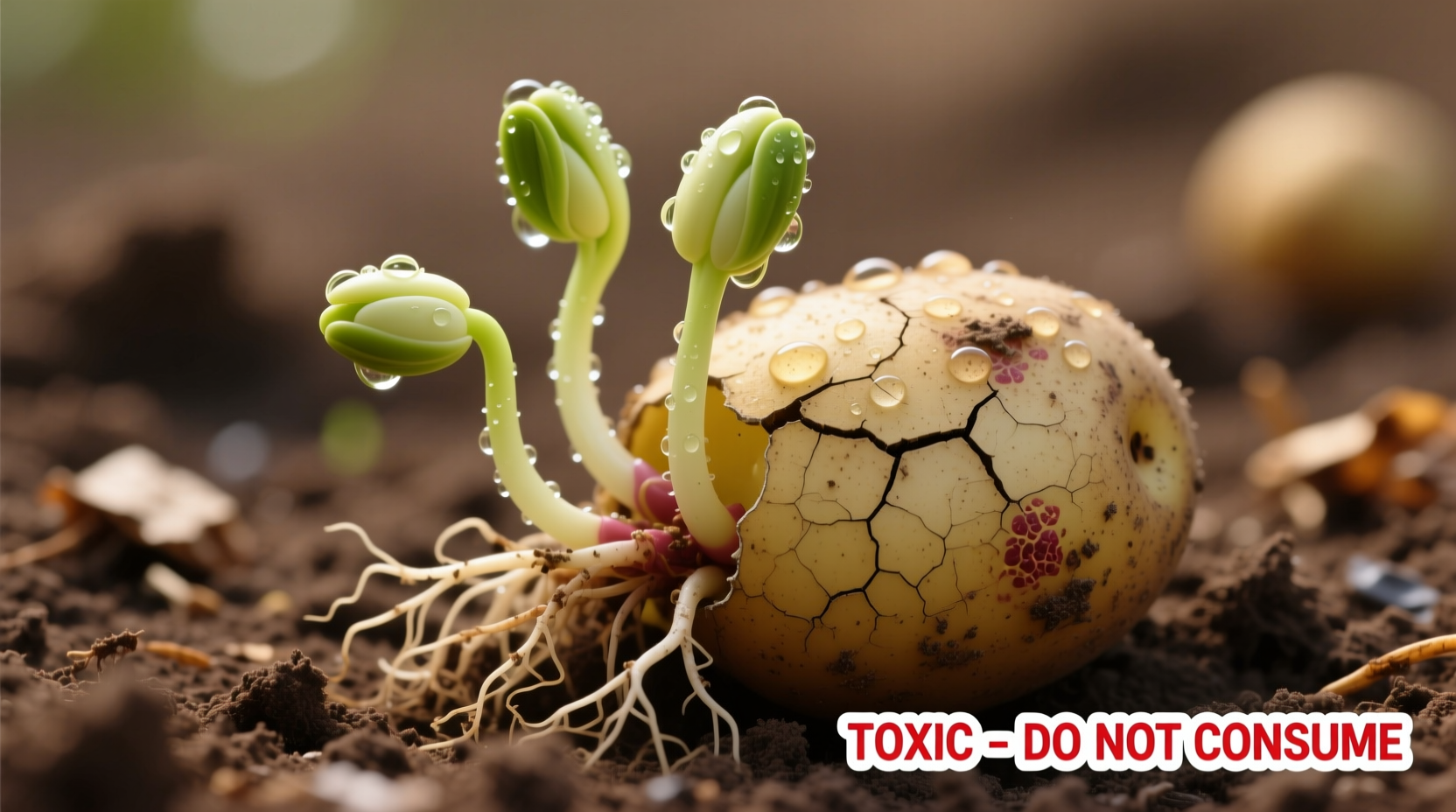Yes, potato sprouts and the green areas around them contain toxic compounds called solanine and chaconine. These natural plant defenses can cause nausea, vomiting, and neurological symptoms if consumed in significant amounts. Properly stored potatoes with small sprouts can often be salvaged by thorough peeling and removing green sections, but severely sprouted or green potatoes should be discarded.
The Hidden Danger in Your Pantry: Understanding Potato Sprout Toxicity
That forgotten bag of potatoes in your pantry has started sprouting, and you're wondering: Can I still eat these? This common kitchen dilemma requires more than a simple yes-or-no answer. Understanding the science behind potato sprout toxicity helps you make informed decisions about food safety without unnecessary waste.
Why Potatoes Produce These Natural Defenses
Potatoes belong to the nightshade family (Solanaceae), which naturally produces glycoalkaloids like solanine and chaconine as protective compounds. These toxins increase when potatoes are exposed to light, damaged, or begin to sprout as a defense mechanism against pests and disease.
According to research published in the Journal of Agricultural and Food Chemistry, solanine concentrations can increase from 0.07-0.1 mg per gram in healthy potatoes to over 1 mg per gram in sprouted or green areas—levels that can potentially cause illness when consumed.
How Much Is Actually Dangerous?
The threshold for solanine toxicity varies by individual, but food safety experts generally agree that:
- Consuming 2-5 mg of solanine per kilogram of body weight may cause symptoms
- Severe symptoms typically occur at 5-6 mg/kg
- Lethal doses are estimated at 3-6 mg/kg, though documented fatalities are extremely rare
| Toxin Level | Symptoms | Typical Potato Condition |
|---|---|---|
| 0.2-1 mg/g | No symptoms | Fresh, properly stored potatoes |
| 1-2 mg/g | Mild stomach upset | Small sprouts, slight greening |
| 2-5 mg/g | Nausea, vomiting, headache | Moderate sprouting, noticeable greening |
| 5+ mg/g | Neurological symptoms, fever | Heavy sprouting, extensive greening |
This data aligns with guidelines from the U.S. Food and Drug Administration, which emphasizes that while occasional consumption of slightly sprouted potatoes won't harm most people, consistently eating potatoes with high glycoalkaloid levels poses health risks.
Recognizing Unsafe Potatoes: A Visual Guide
Before you reach for that peeler, learn to identify potatoes that have crossed the safety threshold:
- Green discoloration - Indicates chlorophyll development, which correlates with increased solanine
- Long sprouts - Sprouts longer than 1 inch signal significant glycoalkaloid production
- Soft or wrinkled texture - Shows advanced deterioration beyond just sprouting
- Bitter taste - A natural warning sign your body recognizes as potentially harmful

Practical Steps for Safe Potato Handling
Not all sprouted potatoes need immediate disposal. Follow these evidence-based steps to maximize food safety while minimizing waste:
- Assess the sprouting level - Small "eyes" (under 0.5 inches) with no greening often can be safely prepared
- Peel deeply - Remove at least 1/4 inch around sprouts and any green areas, as toxins concentrate just beneath the skin
- Discard questionable potatoes - When more than 30% shows greening or sprouts exceed 1 inch in length
- Store properly - Keep in cool, dark, well-ventilated space (45-50°F is ideal) to prevent sprouting
Research from the USDA Agricultural Research Service confirms that proper storage can extend potato shelf life by 3-4 weeks while maintaining safe glycoalkaloid levels below 0.2 mg/g.
Common Misconceptions About Potato Sprouts
Several persistent myths about potato sprouts create unnecessary food waste or, conversely, potential health risks:
- Myth: Cooking destroys all potato toxins Fact: Solanine and chaconine are heat-stable and not significantly reduced by boiling, baking, or frying
- Myth: Only the sprouts are toxic Fact: Toxins spread throughout the potato, with highest concentrations near sprouts and green areas
- Myth: Organic potatoes don't produce these toxins Fact: Glycoalkaloid production is a natural plant defense mechanism regardless of farming method
When to Seek Medical Attention
Symptoms of solanine poisoning typically appear 8-12 hours after consumption and may include:
- Nausea and vomiting
- Stomach cramps and diarrhea
- Headache and dizziness
- In severe cases: fever, confusion, or difficulty breathing
The Centers for Disease Control and Prevention reports that most cases resolve within 24 hours with supportive care, but severe symptoms warrant immediate medical attention, especially for children and elderly individuals who may experience more pronounced effects.
Preventing Potato Sprouting: Storage Best Practices
Proper storage significantly extends potato shelf life and prevents toxin development:
- Store in cool, dark place (45-50°F is ideal)
- Avoid refrigeration (causes starch conversion to sugar)
- Keep away from onions (ethylene gas accelerates sprouting)
- Use ventilated containers like paper bags or baskets
- Check weekly and remove any starting to sprout
According to the U.S. Department of Agriculture, these storage methods can maintain potato quality for 2-3 months while keeping glycoalkaloid levels well below safety thresholds.
Understanding Risk in Context
While potato sprout toxicity is a legitimate food safety concern, perspective matters. The average person would need to consume approximately 4.5 pounds of fully greened potatoes to reach a potentially lethal dose. However, smaller amounts can still cause unpleasant symptoms, particularly in children who have lower body weight thresholds.
Food safety experts emphasize that the risk from occasional consumption of slightly sprouted potatoes is low for healthy adults, but consistent exposure to elevated glycoalkaloid levels may contribute to chronic digestive issues. This nuanced understanding helps you make informed decisions without unnecessary fear or waste.











 浙公网安备
33010002000092号
浙公网安备
33010002000092号 浙B2-20120091-4
浙B2-20120091-4